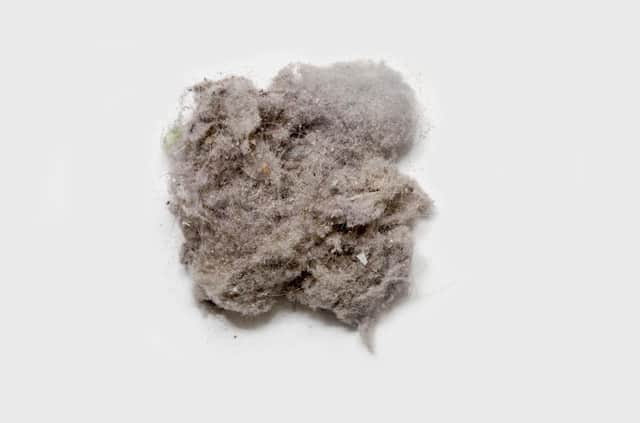Dr's Casebook: Why you should get rid of dustballs in the home


Dr Keith Souter writes: Dustballs are those balls of fluff and dust that seem to appear magically under beds, couches and furniture. They are interesting because of the way they form in even the most house-proud of homes. They are made up of hair, carpet fibres, human skin cells, spider cobwebs and microscopic debris. Static electricity is the force that makes them form into fluffy balls, then the loose fibres hold them together. Air currents move them about under furniture, like miniature tumbleweeds.
As you are probably aware, many people react to house dust. Of more concern is the fact that dust balls can be the homes of house dust mites. These tiny creatures are often the real problem with house dust. This is because their intestinal contents contain powerful digestive enzymes called peptidases that people often react to.
Advertisement
Hide AdAdvertisement
Hide AdSo, it is a good idea to keep the house free of dustballs. Especially in the bedroom, because that is one of the commonest places for them to form.
To effectively get rid of them you should twice a week use a static dusting mop under beds, dressers and all furniture that is often ignored in the general housework.
Beds ought to be changed at least once a week. This is to ensure that you get rid of dead skin cells. Otherwise they get blown about the house. The significance of this is that skin flakes are a large part of the diet of house dust mites.
Male house dust mites only live for a couple of weeks, but the females can live for seven weeks. It is estimated that a single female can produce two thousand excreta pellets, containing the irritant digestive enzymes. Those can be moved around in the dust balls.
It may surprise you, but sweeping is not a great idea, because it scatters a lot of dust, especially the particles that you can’t see. Far better to use a vacuum.
Comment Guidelines
National World encourages reader discussion on our stories. User feedback, insights and back-and-forth exchanges add a rich layer of context to reporting. Please review our Community Guidelines before commenting.